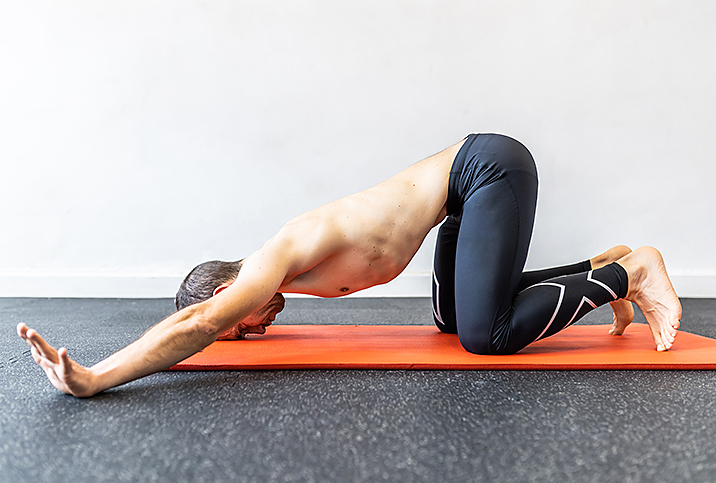Everything You Ever Wanted to Know About Kegels

Kegels are a pelvic floor strengthening exercise, or "push-ups" for your pelvic floor muscles, said Ashley Rawlins, D.P.T., a physical therapist in Dallas and the clinical learning and development lead at Origin physical therapy.
"Our understanding of Kegels and what the pelvic floor muscles need from resistance training, or don't need, for optimal bowel and bladder control, sexual function, pelvic organ support, pelvis and low back stabilization, and support of breath and circulation in the area has come a long way," Rawlins explained.
The origin of Kegels
Similar to how Pilates got its name, "Kegel" was actually a person. Kegels are named after gynecologist Arnold Kegel, who in 1948 introduced this exercise as a treatment for injured pelvic floor muscles that also could be helpful in improving bladder leakage and pelvic organ prolapse in his patients, Rawlins said.
Benefits of Kegels
When Kegels are performed properly, they can help you improve the performance and strength of your pelvic floor.
"More specifically, depending on the type of Kegel exercises that you do, they can help to improve the tone, power, flexibility, endurance, coordination and speed of your pelvic floor muscles. These are all ideal characteristics of a strong and healthy pelvic floor," Rawlins explained.
Pelvic floor muscle dysfunction (PFMD) and Kegels
For the treatment of pelvic floor muscle dysfunction (PFMD)—the inability to coordinate and relax your pelvic floor muscles in order to have bowel movements—there is evidence that Kegels can be beneficial. Some of the notable symptoms of PFMD include constipation, leaking stool or urine, straining to urinate and the feeling of needing to urinate frequently.
Research also indicates that Kegels can be extremely effective in treating PFMD in patients with underactive and weakened or injured pelvic floor muscles, according to Rawlins.
Kegels aren't for everyone
Dysfunctional pelvic floor muscles do not always need to be strengthened. Some muscles need flexibility or improved control of movement and coordination, Rawlins advised.
Everybody is different and has different needs. As Rawlins suggested, Kegels aren't for everyone, and it's certainly not the only treatment you can utilize to strengthen your pelvic floor or manage symptoms of PFMD.
The correct way to do Kegels
In order to see the benefits of Kegels, you need to make sure you are doing the exercise correctly.
Rawlins said one Kegel repetition consists of a full pelvic floor muscle contraction, squeezing "up and in," followed by a full and complete pelvic floor muscle relaxation. Contract, hold, relax and repeat.
Attempting to stop the flow of pee while urinating by clenching your pelvic floor muscles is the most frequently advised method for ensuring that you are performing Kegels correctly. But stopping urine flow is not something you should do frequently. Instead, Rawlins advised that you try some other techniques, such as doing Kegels while you are sitting up straight on a hard surface by rocking forward onto your "sit" bones.
As you tense your pelvic floor muscles, Rawlins explained, you should be able to feel your tailbone moving (even with your fingertips). If your tailbone goes inward or "tucks" while your pelvic floor muscles are contracted, you are performing Kegels correctly.
How often should you do Kegels?
To see and feel the advantages, you must perform Kegels frequently. How often you perform Kegels depends on how much strengthening you require. Listen to your body and discuss the frequency of Kegels you might need with a health professional.
Tara Scott, M.D., an OB-GYN and the medical director at Forum Health in Akron, Ohio, advises patients to perform Kegels at least twice a day. They can even do sets of 10 when they are at a stoplight in traffic, she said.
The specifics are different for everyone, but as a general rule for any skeletal muscle in the body, you need to train consistently for at least eight weeks to see some change in your muscle strength, Rawlins said.
Kegels are not the be-all and end-all of pelvic floor health
It's a common misconception that if you have pelvic floor issues, all you need is to do some Kegels to fix the problem, but that isn't entirely true.
"Kegels are great for [people] with underactive muscles that would have better function and support if strengthened. But if your muscles are tight and painful, Kegels would not help any of your symptoms, at least not at first. Kegels are helpful for some and not helpful for others. It depends on what is going on with your muscles," Rawlins said.
You don't have to do Kegels to the beat of a song
Another myth is if you have good pelvic health, then you should be able to do Kegels to the beat of a specific song, but this isn't true.
"While this certainly is a kind of agility training for your pelvic floor, it's definitely not required for great pelvic floor health. A healthy pelvic floor is strong, flexible, coordinated and trained functionally for the challenges you put it through during the day. Kegeling to Britney Spears is for sure not a requirement," Rawlins said.
If you're still confused about Kegels, then you should check in with a pelvic health physical therapist, Rawlins suggested, as they can help you learn the best way to do Kegels for your own pelvic health.


















